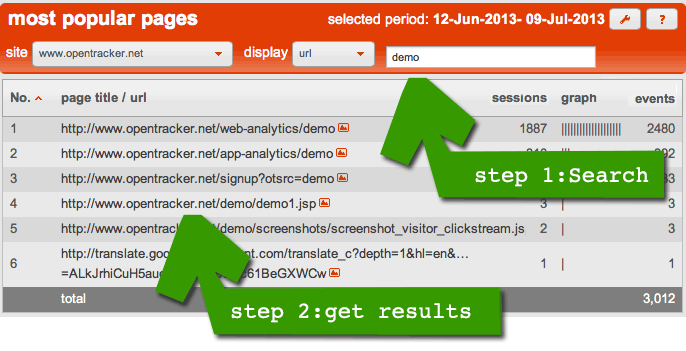Why Your Search Terms on Google Don’t Show Up, and What You Can Do About It
uncategorizedWhy Your Search Terms on Google Don’t Show Up, and What You Can Do About It
There used to be a time when it was possible to log into analytics tools such as Opentracker to see a wealth of data about keywords; specifically, the keywords people used to find your website. With this information you could then track conversions, and make improvements in areas that would be the most profitable. Why, then, do you see so few search terms in your Opentracker dashboard?
The first thing to say is that this is not an Opentracker issue. If you use any other analytics software, you will encounter the same thing – hardly any keyword data. The reason is that Google doesn’t divulge the information anymore. It used to, but that all changed when it started encrypting searches.
Basically, this means a huge number of searches done on Google use secure search. When the search is over a secure connection, Google doesn’t make data on the keywords used available to the website. Your analytics provider can only process data that your website has, and if Google isn’t giving it to you, it can’t be shown or used in analytics platforms such as Opentracker.
The keywords affected by this are often referred to as “not provided” keywords as this is the only information that Google gives you, i.e. it is not provided.
This change in Google’s policy began in 2011 when it encrypted searches for users who were signed into their Google account as well as some searches conducted on the Chrome web browser. In 2013 it expanded the policy to cover even more searches, including searches done in the Firefox web browser.
In statements Google has cited privacy as its reason for the policy – protecting the privacy of people conducting searches. It also predicted that the impact would be minimal to the point that it would affect only a small minority of searches. For most websites this prediction has proved inaccurate as the majority of keyword information is held back by Google. In other words, “not provided” keywords often account for more than 50 percent of the keywords you find in your analytics tool.
Getting Around Google’s “Not Provided” Keyword Problem
Whatever analytics tool you use, there is no easy method of getting around Google’s restrictions to get information on the keywords people use to find your website. Most people involved in digital marketing have given up on that strategy and instead tackle the problem from a completely different angle.
The core of the different approach starts with the objective. The objective of using keywords was to improve your website in order to attract more visitors and increase conversions. Keyword data was handy because with that information you knew where to focus your efforts.
Your new strategy should seek to achieve the same objective – improving your website to attract more visitors and increase conversions – by using a different tool, i.e. not keywords.
One way is to display your products or services in smaller groups using multiple pages. You can then monitor which of these pages (or product groupings) gets the most traffic. That is the one that is probably doing best in search.
You can also use social logins to your website. When a person logs into your website using their Facebook or Twitter account, you will get access to data that you can use to tailor your message and improve your website. To make this strategy work you will usually have to offer an incentive for the visitor not only to sign up, but also to give you access to their social media account. Giving away free content – such as an eBook or white paper – is a method that many businesses have successfully deployed.
The bottom line is that Google’s restriction on keyword data is here to stay, whatever its motivation for the encryption policy. To get the most out of your website you should largely forget about keywords and instead use different data points and measurements to learn about how people engage with your website. This will allow you to make more informed decisions on how to improve it.


